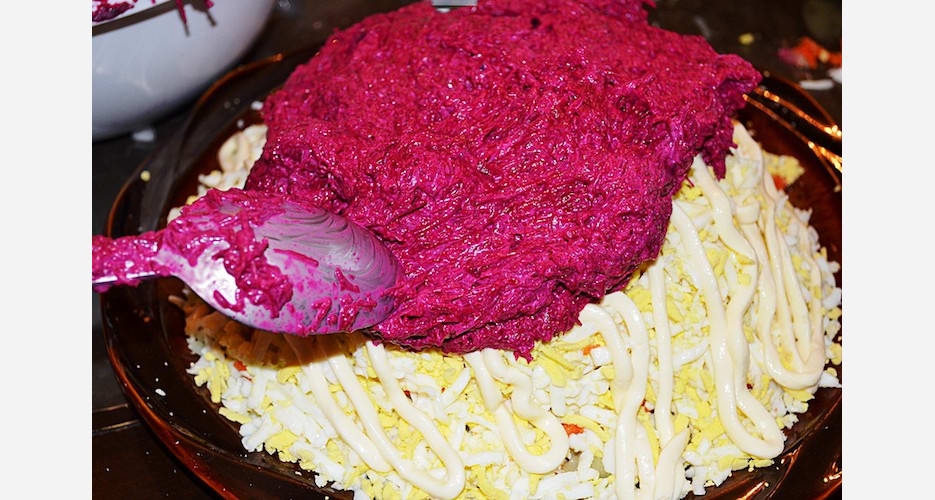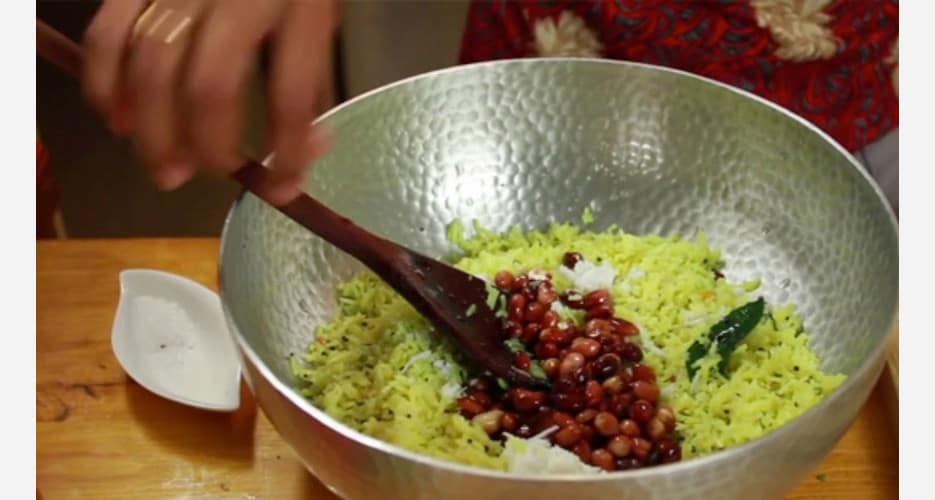In the Gregorian calendar, New Year’s Eve (also known as Old Year’s Day or Saint Sylvester’s Day in many countries), the last day of the year, is on 31 December which is the seventh day of Christmastide. In many countries, New Year’s Eve is celebrated at evening social gatherings, where many people dance, eat, drink alcoholic beverages, and watch or light fireworks to mark the new year. Some Christians attend a watch-night service. The celebrations generally go on past midnight into New Year’s Day, 1 January.
Samoa, Tonga and Kiritimati (Christmas Island), part of Kiribati, are the first places to welcome the New Year while American Samoa and Baker Island in the United States of America are among the last.
Americans who celebrate on New Year’s Eve with a bottle of champagne, party hats and a kiss at midnight have an important lesson to learn from the rest of the world and even certain regions of the USA: New Year’s Day is meant for food.
As the new year arrives around the globe, special cakes and breads abound, as do long noodles (representing long life), field peas (representing coins), herring (representing abundance) and pigs (representing good luck).
The particulars vary, but the general theme is the same: Share food and drink with family and friends to usher in a year of prosperity.
Here are some of the common food New Year’s food traditions in destinations around the world and a few suggestions about where to partake in them:
1. Hoppin’ John, American South
A major New Year’s food tradition in the American South, Hoppin’ John is a dish of pork-flavored field peas or black-eyed peas (symbolizing coins) and rice, frequently served with collards or other cooked greens (as they’re the color of money) and cornbread (the color of gold). The dish is said to bring good luck in the new year.
2. Twelve grapes, Spain
While Americans watch the ball drop in Times Square on New Year’s Eve, the people of Spain watch the broadcast from Puerta del Sol in Madrid, where revelers gather in front of the square’s clock tower to ring in the New Year.
Those out in the square and those watching at home partake in an unusual annual tradition: At the stroke of midnight, they eat one grape for every toll of the clock bell. Some even prep their grapes — peeling and seeding them — to make sure they will be as efficient as possible when midnight comes.
The custom began at the turn of the 20th century and was purportedly thought up by grape producers in the southern part of the country with a bumper crop. Since then, the tradition has spread to many Spanish-speaking nations.
3. Tamales, Mexico
Tamales, corn dough stuffed with meat, cheese and other delicious additions and wrapped in a banana leaf or a corn husk, make appearances at pretty much every special occasion in Mexico. But the holiday season is an especially favored time for the food.
In many families, groups of women gather together to make hundreds of the little packets — with each person in charge of one aspect of the cooking process — to hand out to friends, family and neighbors. On New Year’s, it’s often served with menudo, a tripe and hominy soup that is famously good for hangovers.
4. Oliebollen, Netherlands
n the Netherlands, fried oil balls, or oliebollen, are sold by street carts and are traditionally consumed on New Year’s Eve and at special celebratory fairs. They are doughnut-like dumplings, made by dropping a scoop of dough spiked with currants or raisins into a deep fryer and then dusted with powdered sugar.
5. Marzipanschwein or Glücksschwein, Austria and Germany
Austria and its neighbor Germany call New Year’s Eve Sylvesterabend, or the eve of Saint Sylvester. Austrian revelers drink a red wine punch with cinnamon and spices, eat suckling pig for dinner and decorate the table with little pigs made of marzipan, called marzipanschwein.
Good luck pigs, or Glücksschwein, which are made of all sorts of things, are also common gifts throughout both Austria and Germany.
6. Soba noodles, Japan
In Japanese households, families eat buckwheat soba noodles, or toshikoshi soba, at midnight on New Year’s Eve to bid farewell to the year gone by and welcome the year to come. The tradition dates back to the 17th century, and the long noodles symbolize longevity and prosperity.
7. King cake, around the globe
he tradition of a New Year’s cake is one that spans countless cultures. The Greeks have the Vasilopita, the French the gateau or galette des rois. Mexicans have the Rosca de Reyes and Bulgarians enjoy the banitsa.
Most of the cakes are consumed at midnight on New Year’s Eve — though some cultures cut their cake on Christmas or the Epiphany, January 6 — and include a hidden gold coin or figure, which symbolizes a prosperous year for whomever finds it in their slice.
8. Cotechino con lenticchie, Italy
Italians celebrate New Year’s Eve with La Festa di San Silvestro, often commencing with a traditional cotechino con lenticchie, a sausage and lentil stew that is said to bring good luck (the lentils represent money and good fortune) and, in certain households, zampone, a stuffed pig’s trotter.
9. Pickled herring, Poland and Scandinavia
ecause herring is in abundance in Poland and parts of Scandinavia and because of their silver coloring, many in those nations eat pickled herring at the stroke of midnight to bring a year of prosperity and bounty. Some eat pickled herring in cream sauce while others have it with onions.
One special Polish New Year’s Eve preparation of pickled herring, called Sledzie Marynowane, is made by soaking whole salt herrings in water for 24 hours and then layering them in a jar with onions, allspice, sugar and white vinegar.
10. Kransekage, Denmark and Norway
Kransekage, literally wreath cake, is a cake tower composed of many concentric rings of cake layered atop one another, and they are made for New Year’s Eve and other special occasions in Denmark and Norway.
The cake is made using marzipan, often with a bottle of wine or Aquavit in the center and can be decorated with ornaments, flags and crackers.
11. Russia

In Russia, the New Year’s table wobbles under the weight of tons of food. The tradition here has a lot to do with abundance—big platters of salads, meats, and hot pies. A herring salad called selyodka pod shuboi features salted herring beneath cake-like layers of grated carrots, eggs, and beets—it’s a necessity on every holiday table. Caviar on blinis, an indulgent appetizer, is a also a classic recipe to borrow from the Russians for your soirée.
12. India

The Hindu new year is celebrated in South India in the spring. At the table, there’s plenty of sweet stuff, like foods with jaggery (raw palm, cane, or date sugar), while on the savory end there are platters of rice and lentils (the lentils’ coin-like shape hints at future prosperity). That feast extends to special occasions and get-togethers.